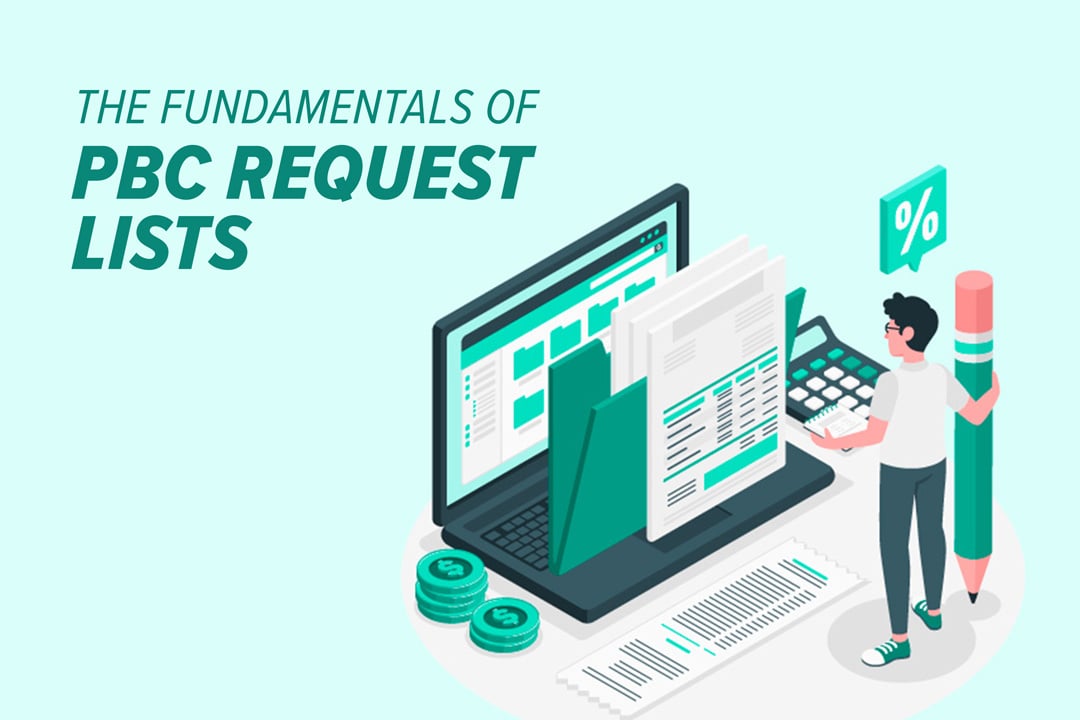Jun 13, 2024 12:01:35 PM |

Whether you’re new to the audit industry or are a seasoned veteran, there’s never a bad time to ensure that you’ve mastered the basics. With that in mind, let’s take an opportunity to revisit those basics that form the foundation of the audit ecosystem.
What is an audit PBC list?
An audit request list, or provided-by-client list (PBC list), is a list of items an auditor needs to, well, execute an audit. The required items tend to be dynamic, meaning that the auditor usually needs to change, add, or edit the number and type of documents required as the engagement progresses.
Which items are included in a PBC list?
There’s no one correct answer to this question. The items included in a PBC list vary by the type of audit and the kind of business the auditor is engaging with. However, it’s safe to say that requests almost always include balance sheet accounts, revenue and expenses, and cash flow. But, PBC lists can also include everything from current loan information to contractual obligations. Anything that has a material impact on your company's finances may be needed for, and represented on, this list.
Why use a PBC list?
Using a PBC list makes your life and your client's life a lot simpler; preparing documents beforehand drastically decreases the amount of time you have to spend auditing your client’s company. The less time an auditor spends auditing, the less the audit costs a client, and the easier both parties’ lives are.
Firms that implement technology to gather and deliver client data are the organizations that thrive, even in difficult times. There are a number of reasons technology is, and will always be, so critical.
First, the general consensus is that the market, industry, and businesses won’t go back to the way things were—either in terms of the way we work or in terms of where we work. In terms of the way firms work, there’s constant pressure to increase efficiency in a competitive economic climate. As efficiency bottlenecks are identified, smart firms immediately look for solutions to alleviate those bottlenecks. Technology is almost always the answer here.
Secondly, technology adoption is a leading indicator of organizational success. Beyond the efficiency gains, a commitment to new technology reveals a firm’s mindset. Is your firm committed to growth and innovation, or is it more interested in maintaining the status quo?
Finally, the technology is worth the investment.
“Using a PBC list makes your life a lot simpler—and cheaper,” expert Amanda Wilkie recently told Boomer Consulting. “The less time an auditor spends auditing you, the less the audit costs.”
How are PBC lists formatted?
The most common means of listing and organizing audit items is by using a Microsoft Excel or Google spreadsheet. Other methods include basic email lists, Microsoft Word documents, proprietary software, homebrewed methods developed by accounting firms, or a streamlined third-party solution such as Suralink.
Click here to learn more about how third-party technology, like Suralink’s all-in-one platform, can help your organization stay on top of audit fundamentals while also achieving continuous success!
Subscribe
Get our latest news and tactics that can help you and your business!
By clicking submit you agree to these terms and conditions.
 Request List Management
Request List Management Secure File Sharing
Secure File Sharing Audit
Audit Tax
Tax Advisory
Advisory Security Consulting
Security Consulting Legal Services
Legal Services Financial Services
Financial Services Pricing
Pricing ROI Calculator
ROI Calculator Library
Library Case Studies
Case Studies Blog
Blog Newsroom
Newsroom